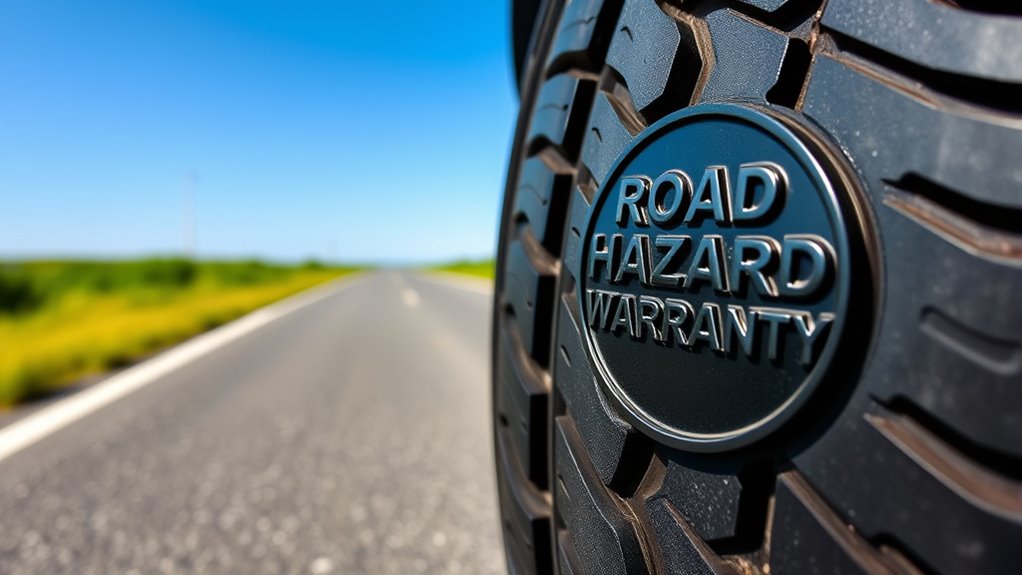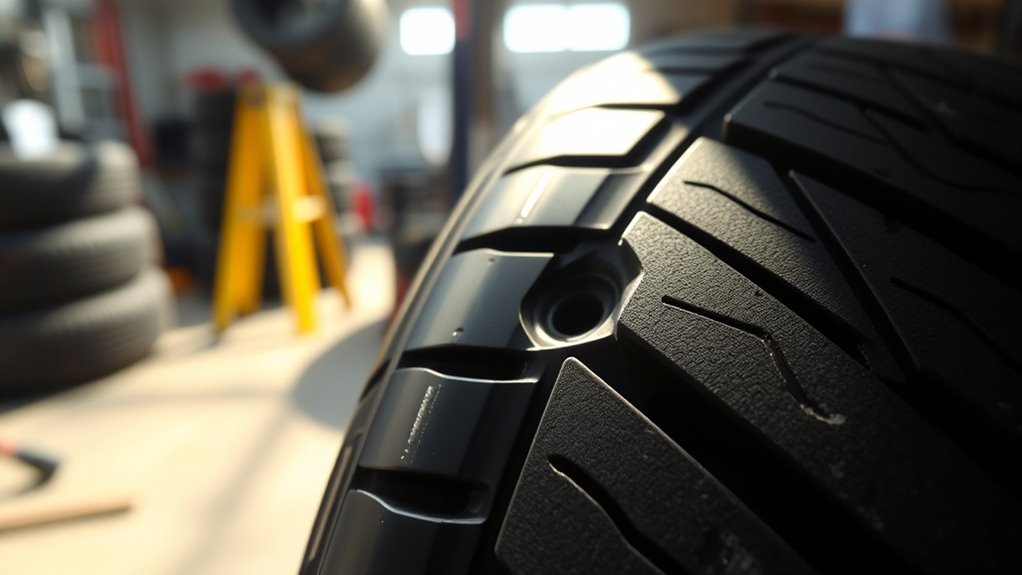A road hazard warranty safeguards your tires from unexpected damage caused by potholes, debris, nails, and more, helping you avoid costly repairs and extend your tire’s life. It typically covers repairs or replacements for damages within a set time or mileage, but coverage can vary. Understanding the details ensures you choose the right protection for your driving habits, and if you keep exploring, you’ll uncover how to maximize your warranty benefits.
Key Takeaways
- Road hazard warranties protect against damages from potholes, debris, and other hazards, potentially reducing repair costs.
- Coverage details vary, often limited to specific damages like punctures, sometimes excluding sidewall or certain incident types.
- Factors such as driving environment, mileage, and tire type influence the most suitable warranty duration and coverage.
- Warranties can be mileage-based or time-based, with higher limits offering better protection for extensive driving habits.
- Understanding the terms helps maximize tire lifespan, avoid unexpected expenses, and choose the right protection for your needs.

When buying new tires, understanding whether they come with a road hazard warranty can save you money and stress down the line. This type of warranty provides extra protection against unexpected damages caused by potholes, nails, debris, and other road hazards. Knowing what’s covered and for how long can help you make an informed decision and avoid costly repairs or replacements sooner than expected. One key aspect to consider is the tire lifespan, which refers to how long your tires are expected to last under normal driving conditions. While a tire’s lifespan is influenced by factors like driving habits, maintenance, and road conditions, warranty coverage can extend or protect that lifespan against unforeseen damage. Additionally, the type of coverage can vary significantly between manufacturers and providers, so comparing options is advisable.
Understanding road hazard warranties can save you money and stress on unexpected tire damages.
When evaluating the warranty coverage, you want to look beyond the basic tread life warranty. A road hazard warranty typically covers repairs or replacements if your tire is damaged due to road hazards during a specified period or mileage. Some warranties are limited, covering only certain types of damage or conditions, while others may be more comprehensive, covering multiple incidents within the warranty period. It’s essential to read the fine print to understand what’s included, such as whether the warranty covers sidewall damage, punctures, or only the tread area. If you frequently drive in construction zones, rural areas, or regions with poor road conditions, a more extensive road hazard warranty can be especially valuable.
Another critical point is knowing the duration of the warranty coverage. Some warranties last for a set number of miles, such as 36,000 or 50,000 miles, while others are time-based, like two or three years. The duration often correlates with the tire’s expected tire lifespan, but it’s wise to take into account your driving environment and habits. If you tend to put more miles on your vehicle than average, look for a warranty with higher mileage limits. Conversely, if your driving is mostly short trips, a time-based warranty might be more suitable.
Ultimately, understanding the specifics of road hazard warranties helps you protect your investment. It ensures that if your tires sustain damage from road hazards, you’re not left shouldering the full cost of replacement prematurely. It’s a proactive way to extend your tire’s effective lifespan and get the most value out of your purchase. Remember, a good warranty can give you peace of mind, knowing you’re covered against the unpredictable hazards of the road while maximizing your tires’ performance and longevity. Recognizing that warranty coverage can vary, it’s wise to consult with your tire provider to find the best fit for your needs.
Frequently Asked Questions
Do Road Hazard Warranties Cover All Types of Tire Damage?
No, road hazard warranties don’t cover all types of tire damage. They typically protect against damage caused by road hazards like potholes, nails, or debris, but exclude damage from curb impacts, improper inflation, or vandalism. You should read your warranty coverage carefully to understand what’s included, as some policies may have specific exclusions. This way, you’ll know when your warranty covers tire damage and when you’ll need to pay out of pocket.
How Long Does a Typical Road Hazard Warranty Last?
A typical road hazard warranty lasts between 24,000 and 36,000 miles or about 2 to 3 years, whichever comes first. While it offers great protection, keep in mind that tire lifespan varies, and some warranty exclusions may apply. You might worry about coverage ending prematurely, but understanding these limits helps you plan for future tire replacements and ensures you’re not caught off guard by unexpected damage.
Are Road Hazard Warranties Transferable Between Vehicle Owners?
Yes, road hazard warranties are often transferable between vehicle owners. When you buy new tires with a warranty, check the warranty transferability policy, as some brands require you to complete owner change procedures. To transfer the warranty, you usually need to provide proof of purchase and notify the retailer or manufacturer. This allows the new owner to benefit from the remaining coverage, ensuring continued protection against road hazards.
What Should I Do Immediately After Tire Damage Occurs?
When tire damage occurs, you should first perform a tire inspection to assess the extent of the damage. Take clear damage documentation, like photos, to support your claim. If the tire is repairable, follow your tire manufacturer’s or warranty provider’s instructions for repair or replacement. Avoid driving on a damaged tire, as this could worsen the issue or pose safety risks. Acting promptly helps guarantee proper handling and coverage.
Are There Any Costs Involved in Claiming a Warranty?
Think of claiming your warranty as steering through a maze with hidden pitfalls. Usually, there are no costs involved if your claim qualifies, but be aware of potential cost implications like labor or replacement fees. Also, watch out for warranty exclusions, such as damage from neglect or misuse, which can block your claim’s path. Always read the fine print to understand what’s covered and what’s not, ensuring a smooth journey to resolution.
Conclusion
Now that you know how road hazard warranties work, you can shop with confidence, knowing you’re protected against unexpected flats or damage. Always read the fine print—think of it as your armor, much like a knight’s shield in a medieval tale. Remember, a good warranty is like having your very own Excalibur, ready to defend you on those rough roads. Stay informed, drive smart, and let your tires be your trusty steed in today’s modern age.









